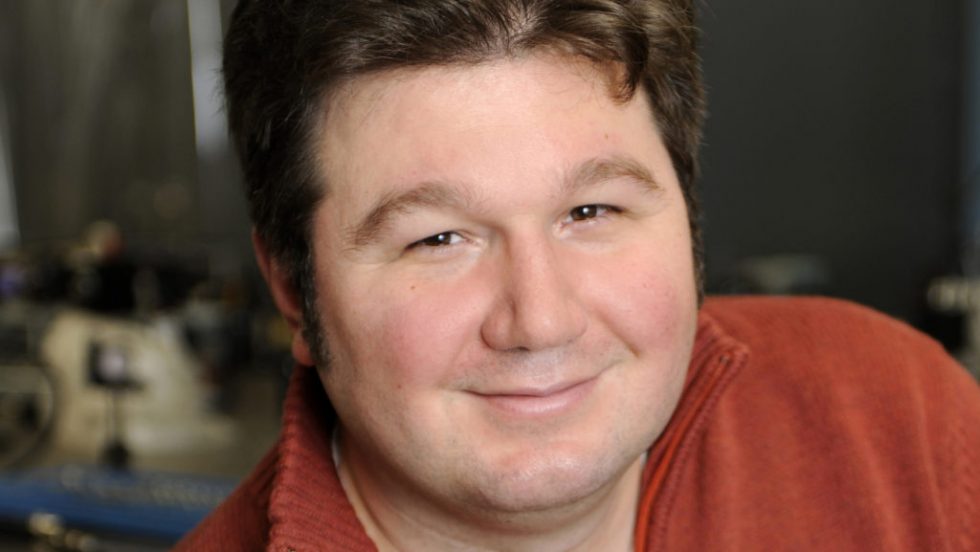
With support from a two-part PhysTEC grant, Matthew Wright, PhD, associate professor and chair of physics, is leading Adelphi’s partnership role in the inaugural Cosmic Pathways conference, held in March at The City College of New York for high school and college students, as well as guiding physics students to network with area high school teachers and students.
PhysTEC (Physics Teacher Education Coalition) grants support PhysTEC networks—organizational partnerships with at least three collaborating organizations, such as universities, K–12 school districts and nonprofit groups—dedicated to recruiting and preparing physics teachers in their communities to end the shortage of stellar physics teachers. Adelphi is the recipient of a two-part grant of approximately $100,000.
“PhysTEC wants to improve the number of physics teachers,” says Matthew Wright, PhD, associate professor and chair of physics. “Why aren’t more students going into physics? PhysTEC might argue that it has to do with high school physics teachers—many of whom are teaching it because they have to, but who don’t love it or have the passion of someone who is actually a physicist.
“Even worse, some schools don’t offer physics at all, and so are cutting off students who would have had careers in physics,” he also points out.
Making Physics Fun
According to Dr. Wright, the idea for the March 1 Cosmic Pathways conference was to get high school and college students excited about physics—as a college major, graduate school option and as a career. “It’s a difficult field to get involved in. A lot of people come to physics and switch. There are hurdles to get through to get to the good stuff of designing and building your own experiments.”
Part one of the PhysTEC grant is funding Adelphi’s role as a leading Cosmic Pathways partner. “The goal of this awesome physics party is to bring fun into play,” he says. “It’s fun to play around and build things. Doing experiments is fun.”
Dr. Wright’s Cosmic Pathways video shares just how physics students, not only from Adelphi but also from area high schools and fellow partner universities, should view physics as a promising route into college, graduate school and rewarding careers.
An Awesome Agenda
Billed as “New York City Region’s Best and Only Conference for High School and College Students Interested in Careers in Physics,” the daylong event at The City College of New York featured a variety of panels, programs and workshops, including:
- A keynote address by Rob Coyne, PhD, project communications director of the Nobel Prize-winning LIGO (Laser Interferometer Gravitational-Wave Observatory) team, which opens the field of gravitational-wave astrophysics through the direct detection of gravitational waves
- A workshop on microprocessors and how to program them led by the senior technology architect at Brookhaven National Laboratory
- A “Be a Shark” career workshop led by Dr. Wright, stressing how a growth mindset and building self-confidence to put ideas forward is a recipe for academic and career success
- A physical science career panel
- A material science panel of graduate students, including Adelphi alumnus and current doctoral student at Stony Brook University James St. John ’18
- A career, college and graduate school fair
- Student poster displays and presentations, including those by Adelphi students
- A Society of Physics Students meeting
Bringing Physics into the Community
The second part of the PhysTEC grant will fund the expansion of ongoing outreach efforts by the Adelphi University Department of Physics. “The gist of this is to put college students in front of high school students and do experiments with them—which gives our students the opportunity to lead,” Dr. Wright explains.
According to him, while students have visited schools in Westbury, Mineola, Commack and Manhasset, the new grant will support engagement with additional local high schools.
Adelphi students can also network with high school teachers—such as Mineola High School physics teacher and Adelphi alumna Carissa Giuliano ’21, MA ’22—to learn about careers in physics education. “Many of our students who have participated in this are interested in pursuing careers in physics education. The net result is the creation of a mutually beneficial physics community,” Dr. Wright notes.
Dr. Wright’s enthusiasm for physics—and inspiring the next generation of physicists—is evident. “It’s an exciting time in physics. I’m blown away by the influx of new technologies. Astrophysics is having its moment in the sun and new data is coming in all the time that can help answer the big questions.”
He continues, “I can’t believe that we can use lasers to measure black holes from millions of years ago. We’re in the second quantum revolution and are now building quantum devices that will be used in ways we can’t even imagine yet. It’s going to be our students who will be teaching us what we can do with them.”
Click the links to learn more about Cosmic Pathways and Cosmic Pathways on Social Media.